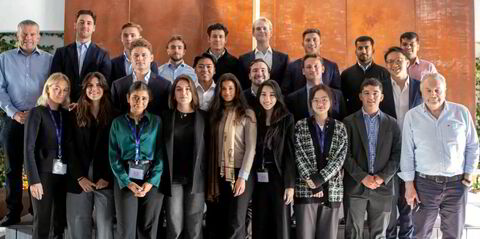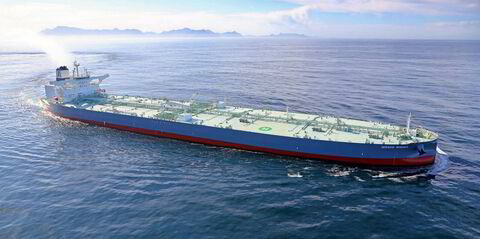The 80th meeting of the International Maritime Organization’s Marine Environment Protection Committee in July has changed the calculus for nuclear in shipping, by connecting two stories: that of nuclear energy for clean hydrogen — and hydrogen-derived fuels — and nuclear energy for ship propulsion.
The revised levels of ambition and indicative checkpoints created now consider the well-to-wake greenhouse gas emissions of marine fuels, at a stroke redrawing the compliance performance of many alternative fuel options.
Add to that the challenges of scaling the production and supply of “green” variants of these fuels, and they may fail to meet one of the boundary conditions of any fuel solution: namely availability and scalability of supply.
Nuclear and renewable-based energy systems extend our line of sight of solutions to achieve net zero by 2050. They can be integrated to work together rather than compete — and this is what makes nuclear unique. But it is not just about a reactor on a ship, nuclear means so much more.
Nuclear energy can link energy demands across the electric, industrial and shipping transportation sectors to optimise energy generation and use, provide reliable power and support the decarbonisation of shipping and industry. Imagine a new generation of floating production, storage and offloading vessels powered by advanced reactors that are generating hydrogen or other hydrogen-derived fuels, desalinating water, or producing key industrial commodities offshore.
Nuclear energy is both an enabler for clean fuels as a producer of hydrogen and a power source for primary movers. It is here that nuclear technology can make its first contribution to the maritime energy transition. With the small footprint and continuous power generation of advanced reactors, the technology offers material advantages in the production of e-fuels such as e-ammonia, e-methanol and pink hydrogen or even carbon-neutral, drop-in renewable diesel fuel.
Offshore electricity and hydrogen production may represent an ideal introduction for nuclear reactors. There, surrounded by an infinite heat sink, an endless supply of water, and it is possible to scale the size of an installation much more easily than we can on land.
When it comes to propulsion, the third and fourth generations of nuclear reactors hold much promise for shipping and the advantages stretch way beyond zero-carbon operations. Many of these reactors have reduced power output compared with existing conventional designs of between 300 MW and 1,000 MW. These are categorised as small modular reactors, or SMRs, with outputs of 20 MW and up, and can be scaled by simply adding more units.
American Bureau of Shipping studies suggest vessels fitted with SMRs may offer faster design speeds, advanced cargo systems or processes, and reverse-cold-ironing services, where electricity can be provided to land-based or port-related marine services.
Potential disruptor

The reactor and supporting systems may well be smaller than existing engine dimensions and weight, especially when considering the reduction of fuel storage on board, potentially increasing cargo capacity.
Finally, vessels fitted with advanced reactors could provide energy for the entire lifespan of an asset, reducing time in port and eliminating bunkering and other costs.
Nuclear energy has the potential to be a disruptor for the marine industry, transforming not only vessel operations but entire supply chains, the ship-to-port interface and redefining safety.
For all its potential, there remains much additional research to be completed. Putting nuclear energy on commercial vessels — a mobile environment frequently in harsh sea conditions and varying geographies and jurisdictions — requires further development and demonstration with an unwavering focus on safety and environmental sustainability.
Advanced reactors pose quite different safety, security and waste issues than legacy reactors, but many details still need to be addressed, including regulatory frameworks, permitting, operating constraints and public acceptance.
Nuclear energy needs to be on the radar of regulators. Regulations need to be modernised to reflect the unique characteristics of advanced nuclear reactors and their dimensional contribution to achieving net zero by 2050. Government support through all of this will be essential.
It is increasingly clear that hydrogen and ammonia are government fuels, in that their development and adoption cannot advance without government intervention and support. This is doubly true for nuclear energy, which requires a unique degree of partnership between private and public interests.
Public-private push
Class society ABS has been bringing governments and industry together to identify and address the barriers to its adoption. In fact, government applications of advanced nuclear technology in the maritime domain may be the best place to start, providing real applications in a government-controlled and regulated environment. Examples could include dredges, strategic sealift vessels, other auxiliary vessels, ice breakers and research vessels.
The developmental path for nuclear energy at sea will require a concerted public-private effort in which innovation and system technologies are implemented through modelling and simulation. This will need to be accompanied by strong financial structures, a tailored regulatory process, international cooperation and government policy efforts.
The hurdles for commercial nuclear shipping are undoubtedly significant but they are not insurmountable. It is a long road ahead, but the destination is a transformed and sustainable shipping industry. The hard work starts now.
Christopher Wiernicki is chairman and chief
executive of classification society ABS.
Do you have an opinion to share?
Email: news@tradewindsnews.com





